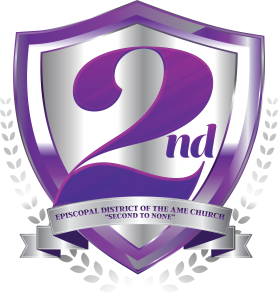BACK TO SCHOOL IN A PANDEMIC - New National Study Includes 50-City Review of School Systems 'Beating the Odds' for Black, Latino, and Low-Income Students
NEWARK, N.J., July 9, 2020 (Newswire.com) - With the 2019-2020 school year drawing to a close and the public’s attention focused on issues of racial justice, MarGrady Research, a leading educational research firm, released an extensive analysis of educational opportunity by race and income in 50 cities during the COVID-19 era. The report, entitled “Resilience: Will Urban Schools that Beat the Odds Continue to Do So During the COVID-19 Pandemic?”, showcases specific urban school systems that are substantially out-performing statistical predictions based on their student populations.
The study aims to serve as a catalyst to understanding which cities have the best access to life-changing schools for students of color and those from low-income families. The analysis also begins to explore the resilience of those city school systems by analyzing data on their remote learning practices at the end of the first school year in the COVID-19 era.
“Our report provides a city-by-city view of which large school systems are best delivering educational opportunity to historically disenfranchised groups,” said MarGrady Research Managing Partner and report co-author Jesse Margolis, PhD. “Even before this pandemic, too many students have faced long odds of success at school--especially African-American children. Our goal is to provide insight into which cities have school systems that are helping students beat the odds, as well as explore their early approach to teaching students in the era of COVID-19. Given the closure of school buildings over the past three months, we are particularly concerned about the resilience of beat-the-odds districts during a time of remote learning.”
In the study, schools were identified as “beating the odds” based on the results of a statistical analysis that compared a school’s actual performance on state assessments to the school’s predicted performance based on factors such as school demographics and grade levels served. Schools that substantially outperformed their prediction based on statistical trends were categorized as “beating the odds.” This study updates and expands on a 2015 study by the Center on Reinventing Public Education.
Among the key findings of the study:
- Newark, Boston, and Pittsburgh topped the 50-city list with the highest share of students attending beat-the-odds schools.
- When focusing on African-American students, Newark, Boston, and New Orleans have the highest share of students attending beat-the-odds schools. In all three cities, these results are driven by a strong charter sector, which enrolled 32% of students in Newark, 21% of students in Boston, and 94% of students in New Orleans.
- With 35% of students enrolled in schools that beat the odds, Newark has nearly double the share of the next highest city. In Newark, a driving force behind the city’s high beat-the-odds rate has been two large and growing charter networks: North Star Academy, which is managed by Uncommon Schools, and TEAM Academy, which is managed by KIPP. However, Newark’s district schools also perform well, with 16% of students enrolled in a beat-the-odds school, double the 50-city average of 8%.
- Denver, Pittsburgh, and Seattle have seen the greatest growth in the share of students of all backgrounds attending beat-the-odds schools between 2012 and 2018. In 2012, 4% of students in Denver attended a beat-the-odds school. By 2018, that number had risen to 15%, an increase of 11 percentage points. Denver is followed by Pittsburgh and Seattle, which saw increases of 10 and 6 percentage points, respectively.
In a companion issue brief, the researchers used a Center on Reinventing Public Education database to catalog the year-end remote learning practices of these same school districts during the current pandemic. They found that beat-the-odds districts and Charter Management Organizations (CMOs) have been relatively more likely to adopt several relatively uncommon practices, like synchronous teaching, synchronous student engagement, and attendance tracking. As districts develop plans for the 2020-2021 school year that involve both remote and hybrid learning models, the analysis could be a helpful reference point.
The report was funded by the New Jersey Children’s Foundation, whose mission is to promote a fact-based discussion about public education in Newark, New Jersey, and has supported other research on public schools in the past.
“Newark has faced incredible challenges for generations, but something special has been happening in our public schools. We are not only beating the odds, but more students are testing higher and attending college. We’re not even close to running a victory lap, but this is a significant paradigm change. In sponsoring this study, we wanted to know if that progress was continuing relative to other cities, and find practices that can be shared with others around the country,” stated New Jersey Children’s Foundation CEO and Founder Kyle Rosenkrans.
About MarGrady Research:
MarGrady Research helps education leaders make better-informed decisions to improve the lives of students. It does this through rigorous analysis of data, clear and insightful presentation of results, and the development of lasting partnerships with the school districts, foundations, and other education organizations it works with. See more at www.margrady.com.
# # #
Media Contact: Matthew Frankel, MDF Strategies, Matthew@MDFStrategies.com, 917.617.7914
Source: MarGrady Research
